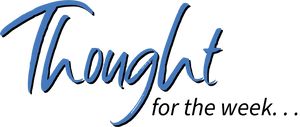
Climate and Culture
,
In Your Corner
,
Teacher Learning
Five Reasons for Educators to Be Optimistic
Earlier this fall, Lexia Learning released the results of a study on attitudes and perceptions of educators regarding their optimism about or the likelihood of burnout in the year ahead. Not surprisingly, educators reported several significant future concerns. Yet, while more educators expressed fear of burnout, the percentage of teachers who alternatively reported optimism trailed close behind.
Obviously, in the near term we’re flanked by concerns. We worry about resources available to serve all students, about time and effort needed to get students back on track with their learning, about the political climate in which we work, and other issues. However, when we step back from immediate issues and concerns, good reasons provide confidence for the education profession.
First, a recent study by the Brookings Institution ranked educators as among the professions least likely to be replaced through automation. The rate of automated job replacement in the aftermath of the pandemic and the scarcity of workers are staggering. Researchers identified many tasks currently performed by teachers that can and likely will be automated. Yet, the study reinforced the crucial role of human interaction in support of learning. They noted that daily tasks and roles of teachers will likely become less administrative, while offering more time and opportunities to engage with and teach learners.
Second and related, a recent study by McKinsey & Company estimated that 20-40% of the tasks performed by teachers, including some lesson preparation, grading, and general administrative tasks, could be automated using existing and developing technologies. The researchers estimated this automation could free up as much as thirteen hours per week for teachers to engage in other professional or personal activities. Of course, teachers often perform these necessary tasks outside school hours. The shift to automation poses a challenge, but with imagination, a willingness to risk, and commitment to succeed, it can happen. Meanwhile, researchers agreed with the Brookings Institution research team that educators’ key work of instructing, coaching, and guiding students will not likely see automation any time soon.
Third, learning skills and the desire to learn are quickly becoming among the most prized skills and characteristics sought by employers. Our work to help students become skilled, motivated learners, who strive beyond following directions and responding to adult expectations, provides the best advantages we can offer. Equally important, as learning becomes a key advantage for workers and organizations, those who can build these skills and instill these attitudes in young people will likely enjoy new status and appreciation. Education may once again become a profession to which young people aspire and an option that caring adults will counsel young people to consider.
Fourth, education still is a profession in which creativity is an everyday opportunity. Many jobs and work roles offer few or no opportunities for flexibility and creativity in response to real time conditions and challenges. Education, every day—often every hour—brings new challenges, insights, and conditions that invite our creativity and demand our flexibility. Of course, we can choose to ignore these opportunities, revert to prescribed practices, and fall back on traditional instructional models. Yet, new strategies we try, innovative approaches we learn, and creativity we employ fuel our success, satisfaction, and, often, our sanity.
Fifth, even slight differences we make with learners can change their life trajectory. We engage with and nurture the learning of children and young people when their intellect, attitudes, and identity are still forming. At this point in their lives, a comment we make, a nudge we offer, or a sense of confidence we instill can be life changing. What we see as a small shift can be magnified decades later as new opportunities, new challenges, and new circumstances to shape the lives of today’s students in ways that can far exceed our imagination. If we doubt this fact, all we need to do is ask successful adults around us to describe key moments and influences that made a difference for them. Inevitably, we’ll hear stories of educators who believed in them, encouraged them, and pushed them to see and be more than they saw in themselves.
Admittedly, this is a challenging time in education, but there are compelling reasons to be optimistic about our profession and our future. Equally important, we can choose to be a part of making real the future for which we hope.

Take Your District and School Professional Learning to a New Level!
learn more
- Teachers
- Administrators
- Paraeducators
- Support Staff
- Substitute Teachers

- Teachers
- Administrators
- Paraeducators
- Support Staff
- Substitute Teachers






Leave a comment
Your email address will not be published. Required fields are marked with *